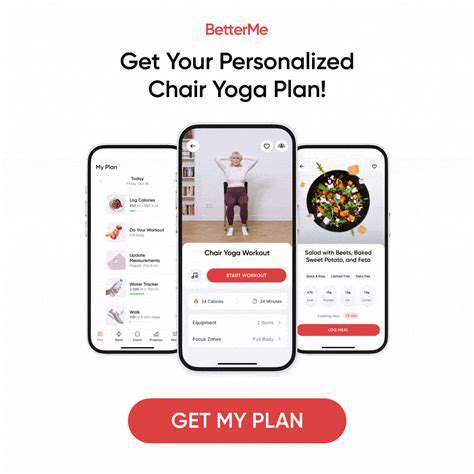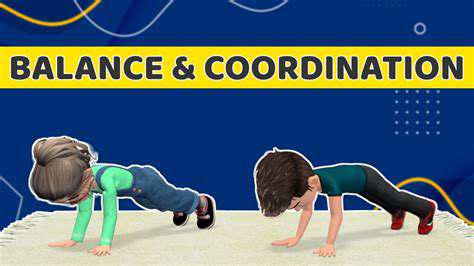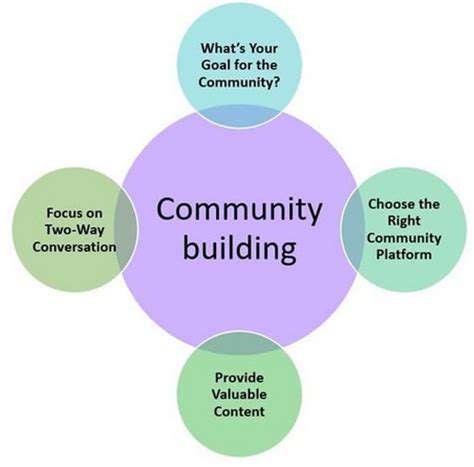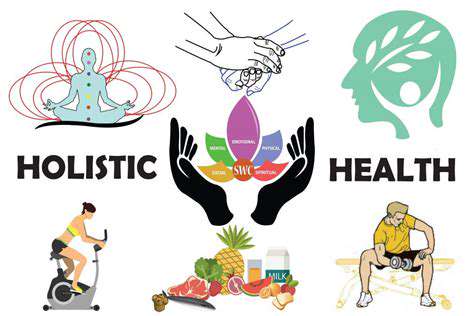7 Simple Balance Exercises Seniors Can Do in Their Kitchen
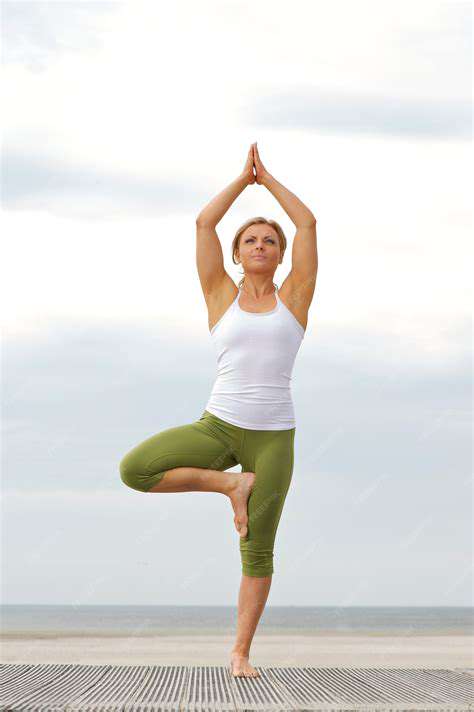
Side-to-Side Steps
Standing on One Leg
Mastering single-leg stance is one of the most practical ways to build stability. This deceptively simple movement engages multiple muscle groups simultaneously, particularly around your lower joints. I recommend positioning yourself near a countertop or sturdy chair when first attempting this. Begin with feet hip-width apart, then gently raise one foot just enough to clear the floor. Maintain this position for 5-8 seconds initially, focusing on keeping your hips level. As confidence grows, extend the duration to 15-20 seconds per side. Many find this exercise fits perfectly into those brief kitchen waiting periods - while the coffee brews or toast browns.
For added challenge, try incorporating this balance practice during actual kitchen tasks. When reaching for that top-shelf spice jar or stirring a simmering pot, consciously shift your weight to one leg. Proper alignment is crucial - imagine a straight line from your ear through shoulder to hip. Regular practice not only sharpens balance but also builds the kind of functional strength needed for daily activities.
Heel-to-Toe Walking
This classic sobriety test doubles as an excellent balance builder. Start near a wall or counter for support if needed. Place one foot directly in front of the other so the heel touches the toe of your back foot. Move slowly with deliberate control, as if walking on a narrow balance beam. The key is maintaining continuous contact between heel and toe throughout the movement.
For kitchen application, try this while moving between workstations. When transferring ingredients from fridge to counter, use this precise stepping pattern. The confined space of most kitchens actually helps by limiting stride length naturally. Focus on keeping your gaze forward rather than down at your feet - this promotes better posture and spatial awareness.
Side-to-Side Steps
Lateral movement often gets neglected in daily life. Begin this exercise with feet together, then step sideways about 12-18 inches. Transfer weight completely before bringing the trailing foot to meet the lead foot. The controlled weight shift is what makes this so effective for balance training.
In kitchen terms, use this movement when accessing cabinets or appliances. Instead of turning your whole body to reach the microwave, practice side-stepping to maintain frontal orientation. This mimics real-world situations where you might need to move sideways while carrying items. Keep movements smooth and controlled - imagine moving through water with resistance.
Clock Steps
This dynamic exercise challenges balance in multiple planes of motion. Visualize standing at the center of a clock face. Step forward to 12 o'clock, then return to center. Repeat to 3, 6, and 9 o'clock positions. The changing directions force constant micro-adjustments in balance, which builds proprioception.
Apply this concept when working at your kitchen counter. As you prep ingredients in different locations, imagine moving through clock positions. The varied foot placements translate directly to the multidirectional movements required during cooking. Start with larger steps between positions, then progress to smaller, more precise movements.
Balancing on a Raised Surface
Elevation changes add valuable challenge to balance work. Begin with a low, stable surface like a single stair step or thick book. Place just the ball of one foot on the surface while keeping most weight on the grounded foot. The slight elevation difference creates an unstable environment that strengthens stabilizing muscles.
In kitchen practice, use the edge of a non-slip mat or small footstool. When performing stationary tasks like chopping vegetables, place one foot slightly elevated. This builds the kind of stability needed for uneven surfaces encountered in daily life. Always maintain three points of contact with support surfaces when first attempting this variation.
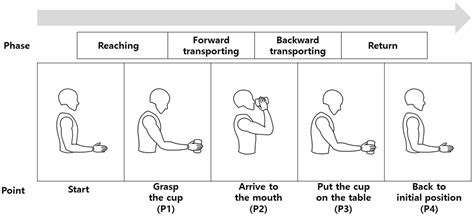
Walking with a Wide Stance
Walking with a Wide Stance for Balance
Adopting a wider gait fundamentally changes your biomechanics. By increasing your base of support, you create natural stability that's particularly beneficial for older adults. Start with feet about 6-8 inches wider than shoulder width. Focus on rolling through each step from heel to toe, maintaining continuous contact with the ground. This modified walking pattern engages hip abductors and core muscles differently than normal gait.
The kitchen's confined space actually benefits this exercise by naturally limiting stride length. Practice when moving between refrigerator, sink, and stove. Pay special attention to maintaining the wide stance even when stopping - this static position builds isometric strength. Over time, you'll notice improved confidence when navigating crowded spaces or uneven terrain outside the kitchen.
Benefits of Wide Stance Walking
Beyond immediate stability, this variation offers several physiological advantages. The altered weight distribution activates often-underused medial thigh muscles. This activation pattern helps counteract the natural loss of hip stability that comes with aging. Additionally, the wider stance promotes better spinal alignment, reducing compensatory movements that can lead to back strain.
Proprioceptive benefits emerge gradually with consistent practice. Your nervous system becomes more efficient at making micro-adjustments to maintain equilibrium. This translates to better recovery when you encounter unexpected balance challenges like uneven pavement or crowded spaces. Many practitioners report feeling more grounded in their daily movements after several weeks of regular practice.
Practical Application in the Kitchen
The kitchen environment provides multiple opportunities to reinforce wide stance benefits. When washing dishes, consciously adopt a wide base. While waiting for water to boil, practice shifting weight gently from side to side within this stance. This functional application bridges the gap between exercise and daily living, making the benefits more immediately apparent.
When reaching for items, maintain the wide stance while extending your arms. This combination challenges both static and dynamic balance simultaneously. The countertop provides natural support if needed, allowing for progressive challenge as ability improves. Over time, you'll find yourself naturally adopting this stable position during all kitchen activities.
Modifications for Different Needs
Individual needs vary greatly, especially for those with existing balance concerns. For those using assistive devices, position the walker or cane within the widened stance area. This maintains the benefits while ensuring safety. Those with hip replacements should consult their physical therapist for specific width recommendations.
For individuals with limited mobility, chair-based variations can provide similar benefits. Sit toward the front of a sturdy chair with feet placed wider than hips. Practice controlled weight shifts and gentle reaches while maintaining this position. The seated version still engages core stabilizers while eliminating fall risk.
Progression and Consistency
Effective progression follows the 10% rule - increase duration or difficulty by about 10% weekly. Begin with 2-3 minute sessions, gradually working toward 10 minutes of continuous wide stance movement. For added challenge, try carrying light items (like a plate or cup) while maintaining the stance.
Consistency matters more than duration. Five minutes daily yields better results than thirty minutes weekly. Link the practice to existing kitchen routines - perhaps while preparing morning coffee or evening tea. This habit-stacking approach promotes long-term adherence.
Safety Considerations
Always prioritize safety when practicing balance exercises. Ensure adequate lighting and clear pathways. Wear supportive, non-slip footwear - many balance-related injuries occur due to inappropriate footwear rather than the exercises themselves. Have a phone or emergency alert device accessible during practice sessions.
Be mindful of fatigue - balance deteriorates when muscles tire. Schedule practice sessions when you're most alert, typically earlier in the day. If using a mobility aid, position it within easy reach throughout the session. Remember that improvement comes gradually - respect your current limits while gently expanding them.


